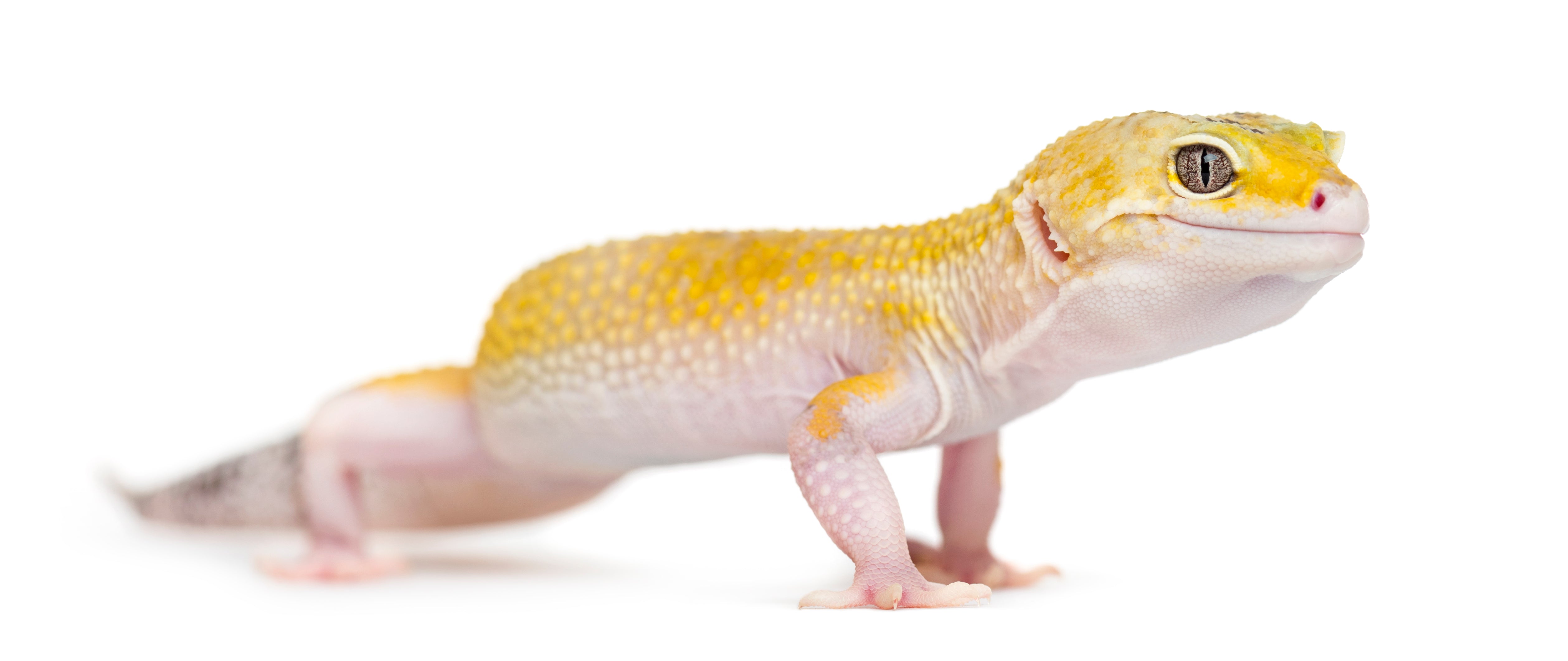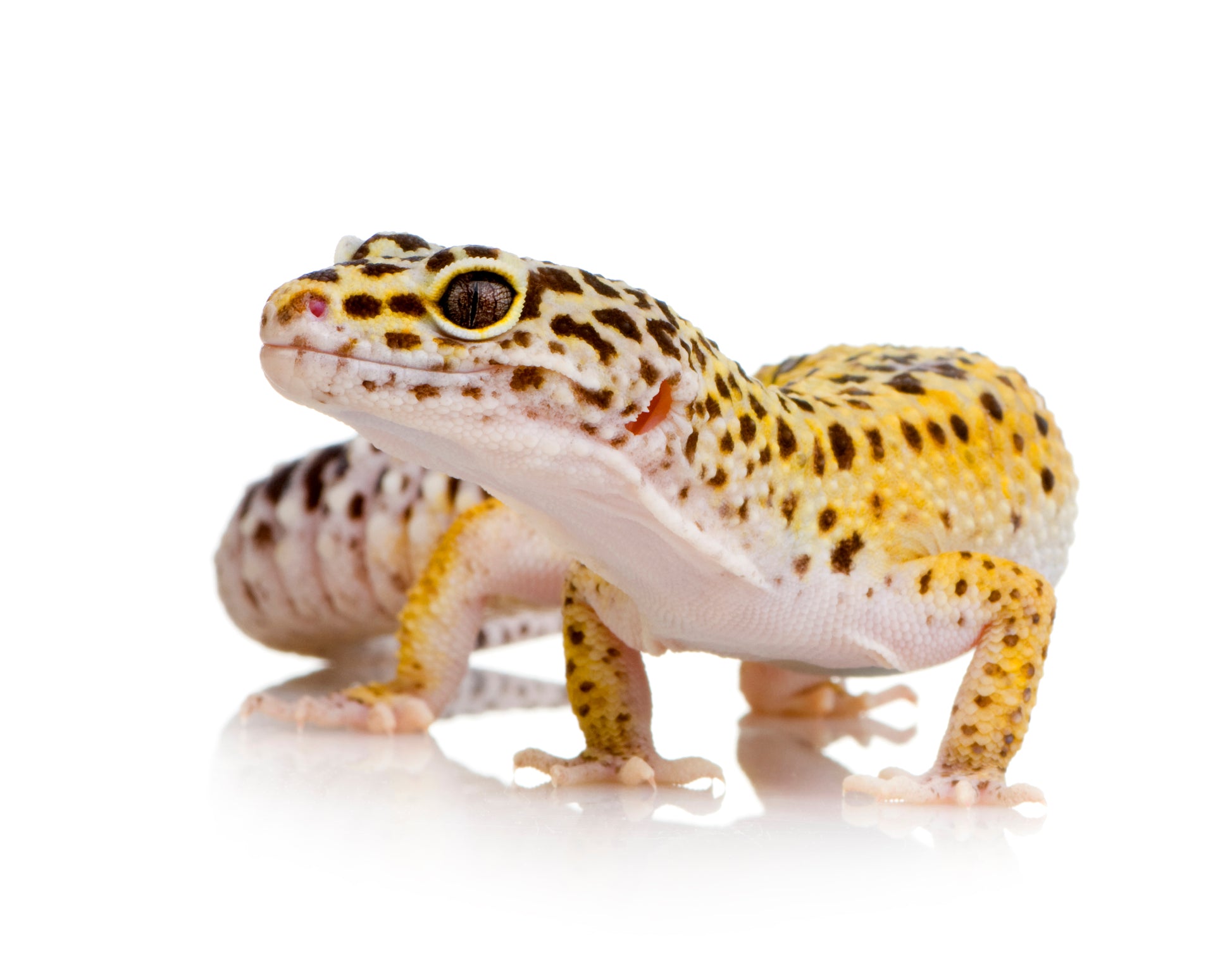A leopard gecko's health and wellbeing is based on various elements. One of the most significant factors that need to be taken into account is their diet. Leopard geckos are insectivores which means that their food is wholly based on protein in the form of insects, to help your leopard gecko to thrive there is a wide range of feeder insects available for you to choose from to help you fulfill their nutritional needs.
The following is a comprehensive list of what leopard geckos can eat:
What Insects Can Leopard Geckos Eat?
Dubia Roaches (Blaptica dubia)
- Contain more nutrition per individual insect than superworms or crickets.
- Extremely quiet, particularly when compared to crickets.
- No stench, they don't smell, again mainly when compared to crickets but also compared to certain other bugs.
- Breed easily. You will often find they have bred on their own so you will have extras.
- No escapees, since they cannot climb smooth surfaces they can't escape their container easily.
- Easy to store, all they need is a container, food source, water source and some cardboard to hide in. They need to be cleaned out regularly.
- Low parasite risk. Compared to other feeder dubia are very clean, as long as they are sourced from a trusted vendor they have a low risk of parasite infection.
Superworms (Zophobas morio)
- A good staple, well balanced between protein and calcium.
- Higher fat content than other common staples so best fed alongside a less fatty staple such a dubia roaches or black soldier fly larvae.
- Better nutrition than mealworms when it comes to protein, calcium, and vitamins. Less of an impaction risk than mealworms due to having less chitin.
- Easy to feed, can be out into a dish and won't escape.
- Don't bite as crickets do.
- Easy to gut-load so you can pass nutrients and vitamins on to your gecko.
- Easy to care for, can be kept in the container they come in for low amounts, if they are ordered in larger amounts and do not arrive in tubs they should be transferred to a larger bin such as a plastic tote, given a substrate such as uncut oats and fed fresh vegetables as a source of food and water.
Mealworms (Tenebrio molitor)
- Readily available and cheap to buy.
- Long lifespan so can be stocked up.
- Easy to feed as they don't escape their dish.
- Don't bite like crickets.
- Easy to gut-load so you can pass nutrients to your gecko.
- They contain a lot of chitin which can be difficult for your gecko to digest and this can lead to impaction.
Black Soldier Fly Larvae (Nutrigrubs) (Hermetica illucens)
- Known as a great source of calcium, this is one of the primary benefits of black soldier fly larvae, they can replace a powdered calcium supplement without D3.
- Inexpensive and well-stocked meaning that they are easy to find and easy to buy.
- Due to their small size some geckos may not be as interested in them as other feeders.
- They can be stored in the container they arrive in and don't need to be fed so easy to store and keep.
- A short lifespan makes it hard to stock up.
Crickets (Acheta domestica)
- A very popular and widely used staple they are easy to obtain.
- Crickets are inexpensive.
- Decent nutrition for your gecko.
- Crickets can bite, they can also hide under things in your gecko's tank so are best fed in a separate feeder tank.
- Crickets easily die even when seemingly taken care of.
- They can be gut-loaded with salad or commercially available products to get your gecko more nutrients than contained in the crickets on their own.
- Easily digested they are less chitin than other feeders, particularly mealworms.
- To house crickets they can be kept in a cricket keeper or plastic tote with plenty of ventilation, a food source, and water source, and also egg crates to climb and hide in.
- Crickets small very badly.
- Can jump and climb and try and escape when you open their container.
Hornworms (Manduca quinquemaculata)
- A good staple due to high levels of protein, calcium, and nutrients in general.
- Well known to be high in moisture which can aid hydration, however, this can also contribute to runny stools which can impact the help of your gecko.
- Grow extremely fast so difficult to feed off to younger dragons and difficult to stock up on.
- Easy to store and maintain they can be kept in the container they come in and are usually provided with food, they just need to be cleaned out daily.
Silkworms (Bombyx mori)
- A healthy feeder insect for your gecko.
- Being docile and slow they are easy to feed your gecko.
- Low in fat and high in protein and calcium.
- Silkworms contain a mild analgesic known as serrapeptase, this can help ease mild symptoms of pain should your gecko be sick and also helps with their calcium absorption.
- Very short lifespan of about a month so very difficult to stock up on.
- Expensive and somewhat rare they cannot be bought very easily and maintaining as a regular feeder would be difficult.
Waxworms (Galleria mellonela)
- A good source of protein and calcium for your gecko.
- Need to be fed alongside other staples that contain less fat like Dubia roaches as waxworms have a particularly high-fat content and can cause obesity if fed as the sole staple.
- Hard to stock up on due to having a short lifespan.
- Sold at online retailers and some pet-stores they can be readily bought but suffer from stock issues from time to time due to being an export.
Butterworms (Chilecomadia moorei)
- A solid source of protein and calcium for your gecko.
- They look comparable to waxworms and are both maggots, however they are not as high in fat as waxworms.
- Larger than BSFL, they can be more tempting for your gecko than the BSFL.
- Due to being an export they can be difficult to find at certain parts of the year or when they are more popular.
- Difficult to stock up on due to having a short lifespan.
- Are able to be kept in the container they come in and don't need to be fed so are easily kept.
IMPORTANT - Supplementation for your leopard gecko
Supplementation of your feeder insects is the process obtaing a supplement powder and dusting your feeder insects with powder before feeding them to your leopard gecko. The easiest way to dust your feeder insects is to put your feeders in a small tub or a plastic baggie, adding a pinch of the dusting powder and shaking the insects in your receptacle of choice to evenly distribute the supplement across the feeders. When you feel they are sufficiently coated you should feed them off before the insect has a chance to clean the powder off.
The supplements that are necessary are calcium without D3, calcium with D3, and a multivitamin supplement. You will need to use these on a schedule, as to avoid using too much of one supplement which can lead to over-supplementation.
Your calcium plus D3 supplement powder shouldn't contain more than 45,000-50,000 IU/kg of D3 or your leopard gecko will end up getting too much D3. Any calcium supplement needs to have a calcium:phosphorous ratio of 2:1 or 2.5:1. The phosphorous portion of your supplement being too high compared to the calcium portion can cause the phosphorous to bind with the calcium and will prevent your gecko from being able to absorb the calcium, always check the label of the supplement before you use it.
You only want to use a pinch of each supplement, avoid them being coated in a thick layer of the powder which means there is too much. Here are three great supplements to use:
Schedule:
Babies
- Calcium x 3 per week
- Calcium with D3 x 3 per week
- Multivitamin x 1 per week.
- All on alternate days.
Juveniles
- Calcium x1 per week
- Calcium with D3 x 2 per week
- Multivitamin x 1 per week
- All on alternate days
Adults
- Calcium x 1 per week
- Calcium with D3 x 1 per week
- Multivitamin x 1 per week
Only dust one meal a day. Never just leave a bowl of powder in their tank as you cannot regulate how much they are being given and this will lead to over supplementation.
Gut-loading your feeder insects
Gut-loading your feeder insects is an essential way to pass on much-needed nutrients onto your leopard gecko. It is separate to supplementation and is done by feeding your bugs salad for a few days before feeding them to your reptile. You can also gut load your feeder insects with commercially prepared foods.
What If My Leopard Gecko Isn't Eating?
Leopard geckos store fat in their tails which means they can go from ten days to two weeks without eating. However, loading their appetite can be a symptom of illness so you want to ensure that your gecko is not sick with regular vet visits.
Reptiles do not require as much food as mammals do in order to survive. They are known in the wild to go the entire winter without needing to eat.
However, it is vital that you ensure your gecko gets a regular healthy diet rich in live insects to keep them healthy.
Giving Water To Your Leopard Gecko
Leopard geckos should have fresh water available for them at all times. This can be put in a small bowl and placed in their tank for them to drink out of when they need to. The water will need to be changed out daily or as and when it becomes solid, in order to keep the enclosure in sanitary conditions and keep your Leo from getting sick.




1 comment
idk kdfigjff
Wow thanks this was very helpful :)
Leave a comment
All comments are moderated before being published.
This site is protected by hCaptcha and the hCaptcha Privacy Policy and Terms of Service apply.